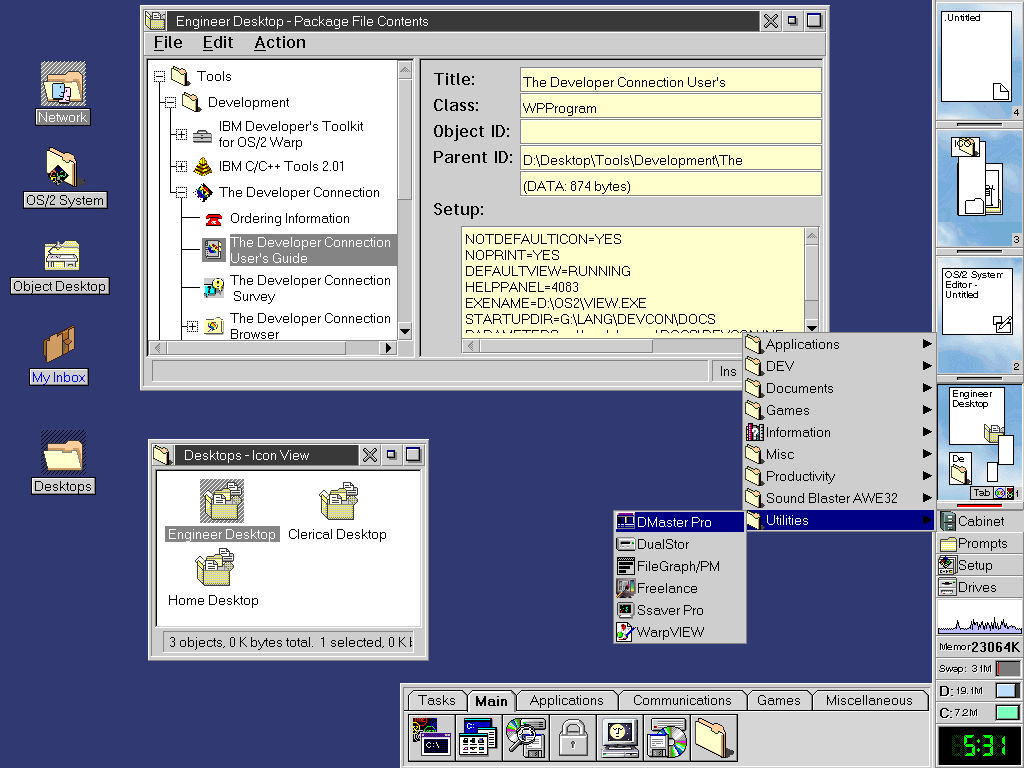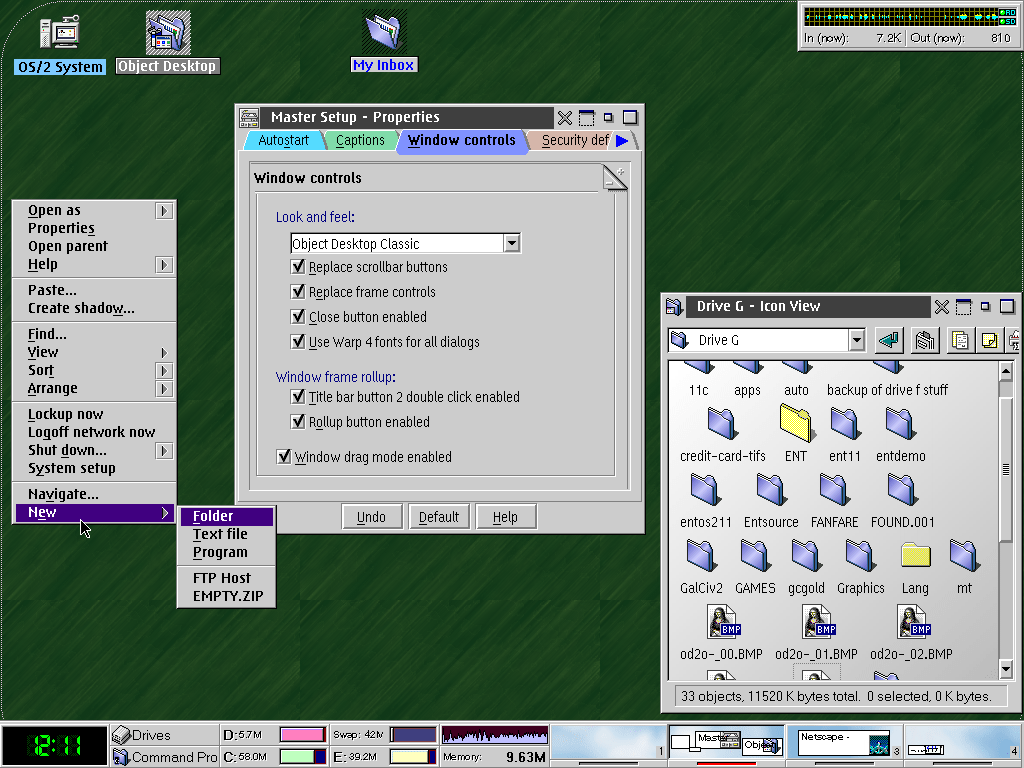Object Desktop History: Difference between revisions
Island Dog (talk | contribs) (Created page with "===1995=== No one knows who the first to "Skin" something was. But we do know that in 1995, Stardock, a young up and coming software developer released Object Desktop for OS/2...") |
Island Dog (talk | contribs) No edit summary |
||
| Line 16: | Line 16: | ||
[[File:Od1.gif|350px]] | [[File:Od1.gif|350px]] | ||
===1996-1998=== | ===1996-1998=== | ||
Revision as of 14:35, 11 September 2020
1995
No one knows who the first to "Skin" something was. But we do know that in 1995, Stardock, a young up and coming software developer released Object Desktop for OS/2. In development for 2 years, Object Desktop was truly a remarkable technological achievement. And it would go on to be the best selling OS/2-specific shrink wrapped package of all time. What Object Desktop did is allow people to enhance the OS/2 desktop to how they wanted it. In OS/2's case, it was usually used to tame the wild OS/2 desktop (called the workplace shell). IBM's view with OS/2 was to make it supremely flexible.
For this part of the history, it is important to remember the key year Object Desktop was developed: 1994. It was the time of Windows 3.1 and DOS. ZIP programs consisted of either very crude GUI programs or PKZIP on DOS. File management was the Windows File Manager or Norton Commander. Virtual desktops on DOS/Windows (or OS/2) were largely unknown. The more you remember the state of the PC in 1994 the more remarkable Object Desktop becomes.
Object Desktop added to OS/2:
- An enhanced visual look (the term "skinning" had not been coined yet).
- The ControlCenter with resource monitoring, virtual desktops, and program launching
- The Tab LaunchPad which made it easy to organize your programs
- Integrated ZIP into the actual file system. ZIP files behaved like any other folder (yes, we were the first to do this).
- A way to package your desktop into a single file or parts of it. Imagine on Windows being able to drag and drop your favorite program into a "package" and having all its registry and class registrations automatically handled seamlessly.
- A Keyboard LaunchPad to launch programs, links, and groups of programs.
And hundreds of enhancements to the OS that were so seamless that many users would come to believe they were part of the OS.
1996-1998
Object Desktop became the most popular non-IBM product on OS/2. Machines that came with OS/2 already installed typically came with Object Desktop with it. And Stardock had more ideas on where computer operating systems could go. IBM asked Stardock's Brad Wardell to come to Austin to discuss what the OS/2 Warp 4 desktop should be. The result is that IBM's OS/2 Warp 4's desktop was simplified and a close button added (in the position Object Desktop placed it).
At the same time, Stardock released Object Desktop Professional version 1.5 and then Object Desktop 2.0.
Object Desktop Pro 1.5 added 3 revolutionary new features:
- Universal File Viewing
- Web spaces on the desktop
- Folder Security
As with much of this history, the timing of these innovations is crucial. Today, the idea of having the web as part of the desktop seems straight forward. Windows 98 introduced Active Desktop. But Object Desktop Professional was developed in 1995.
In Object Desktop 2.0, Stardock combined its original folder design with Microsoft's Explorer design to create a new type of folder window. It also introduced Dynamic Interface Modules (DIMs) which was Stardock's dorky name for "Skins" back then.

